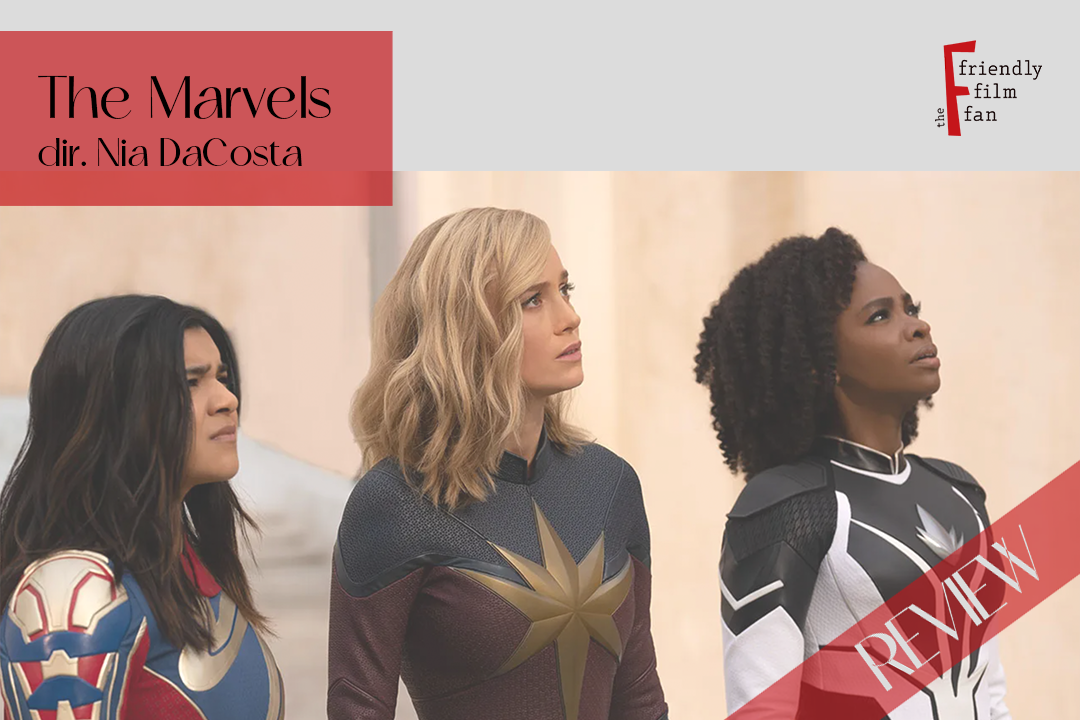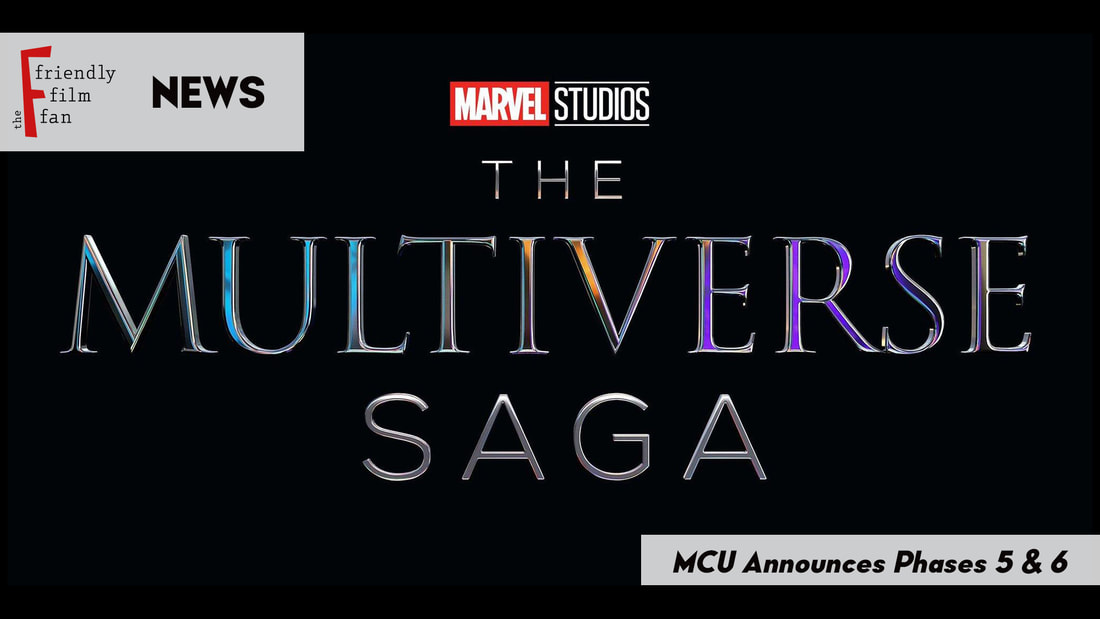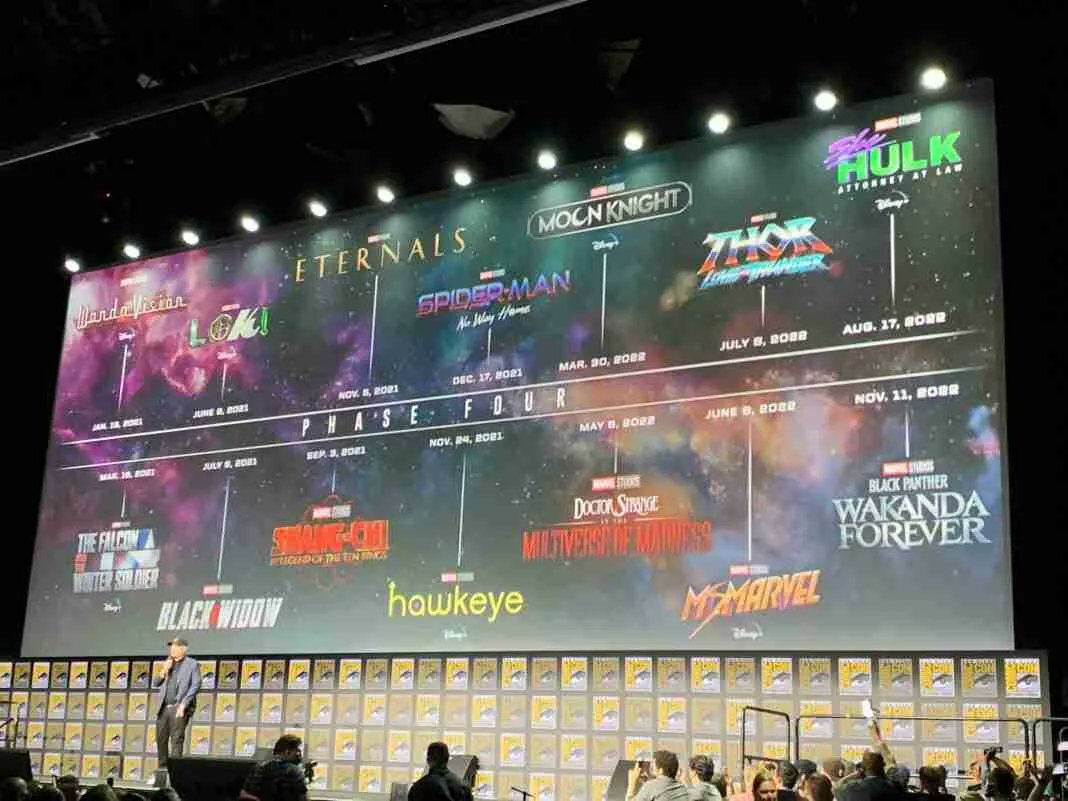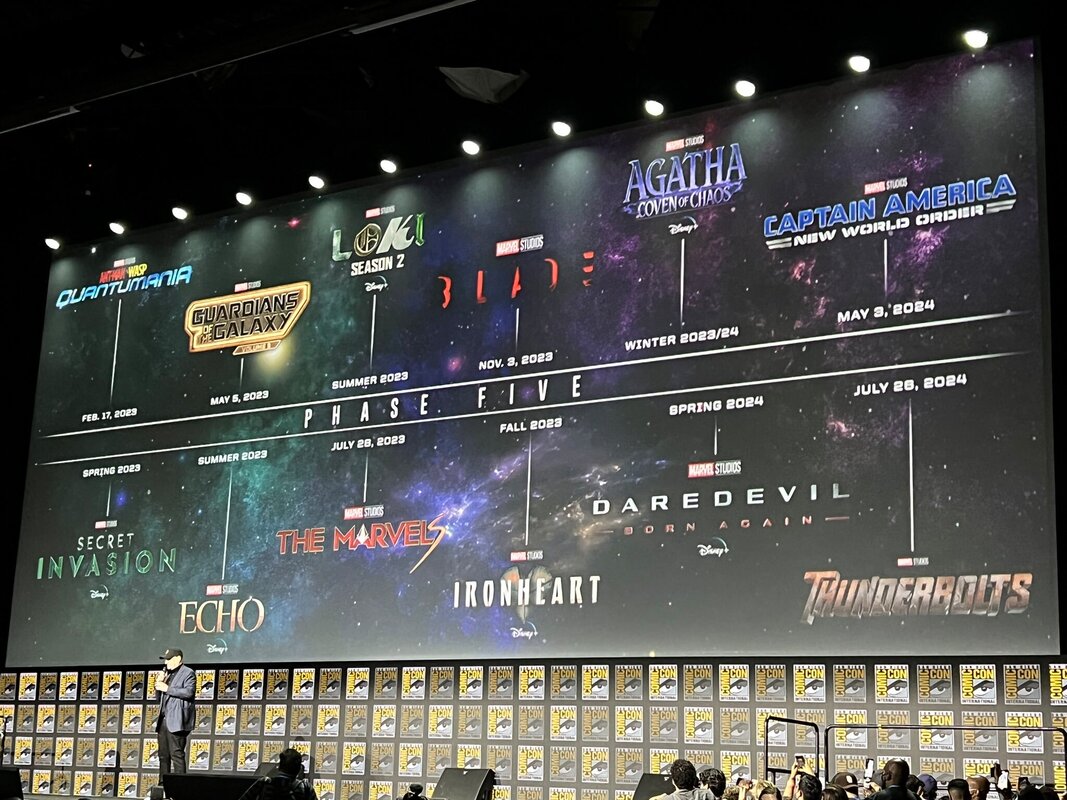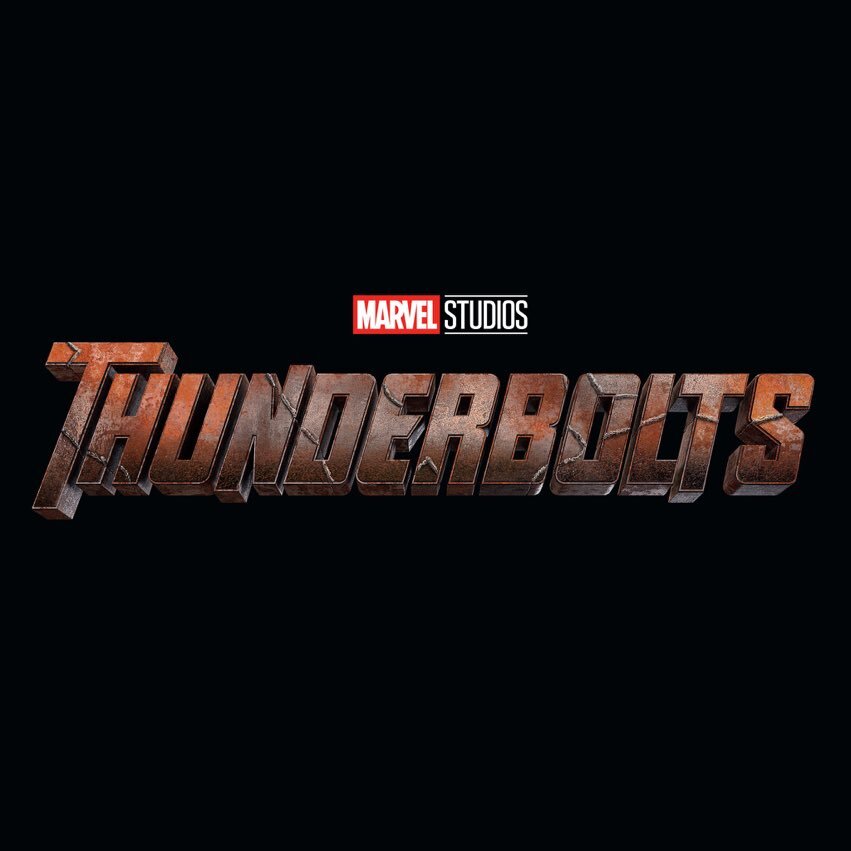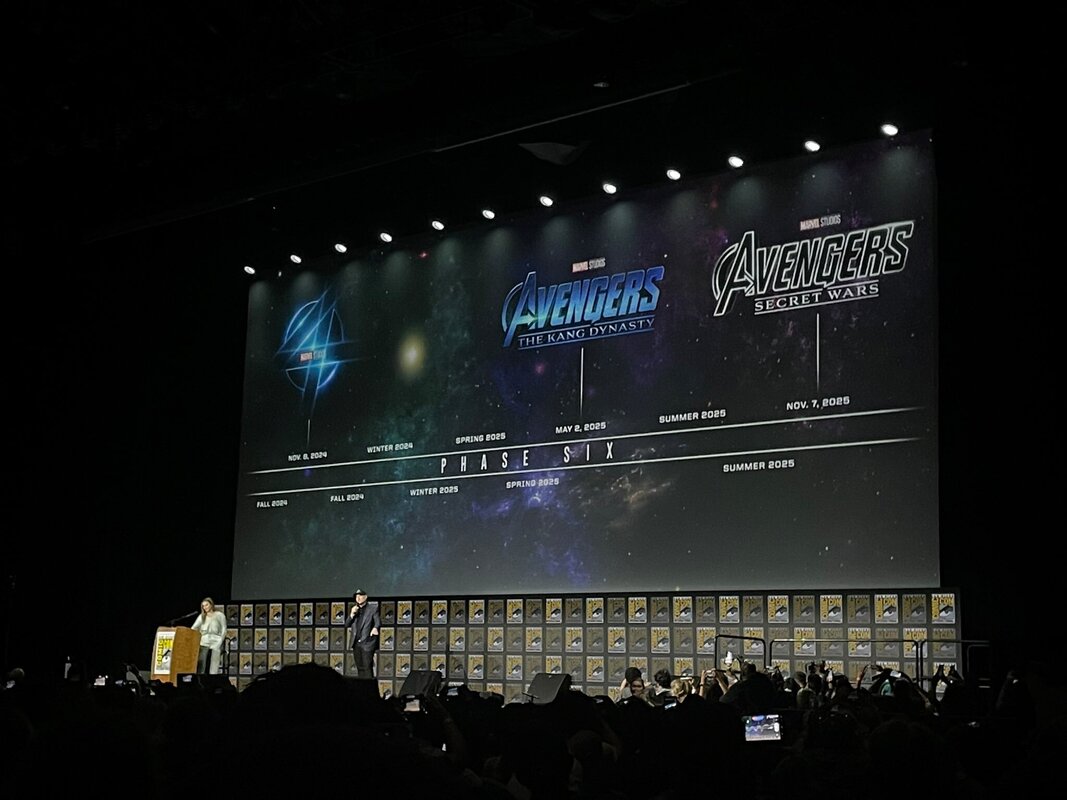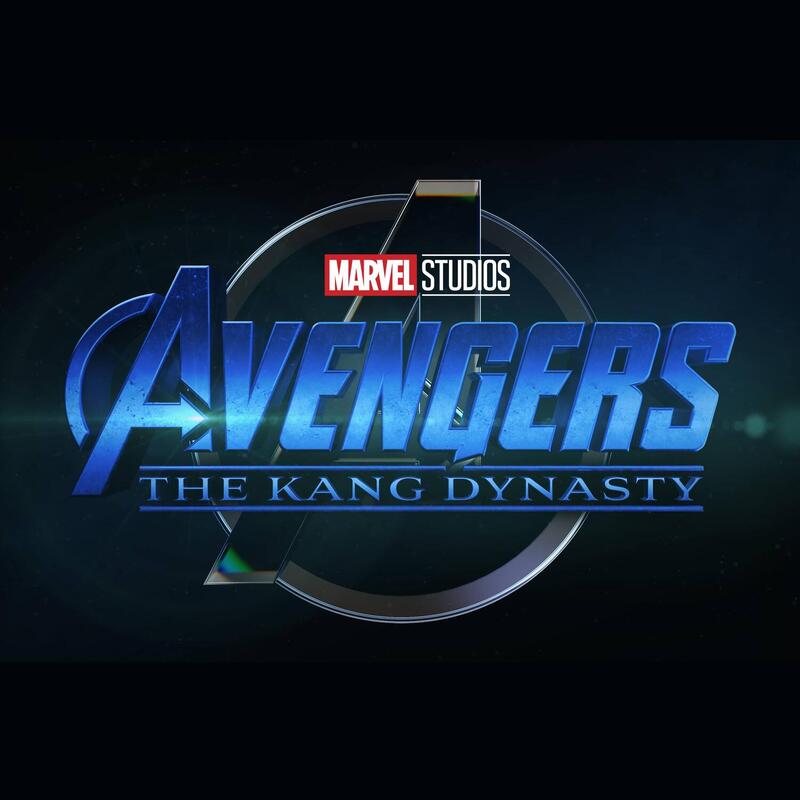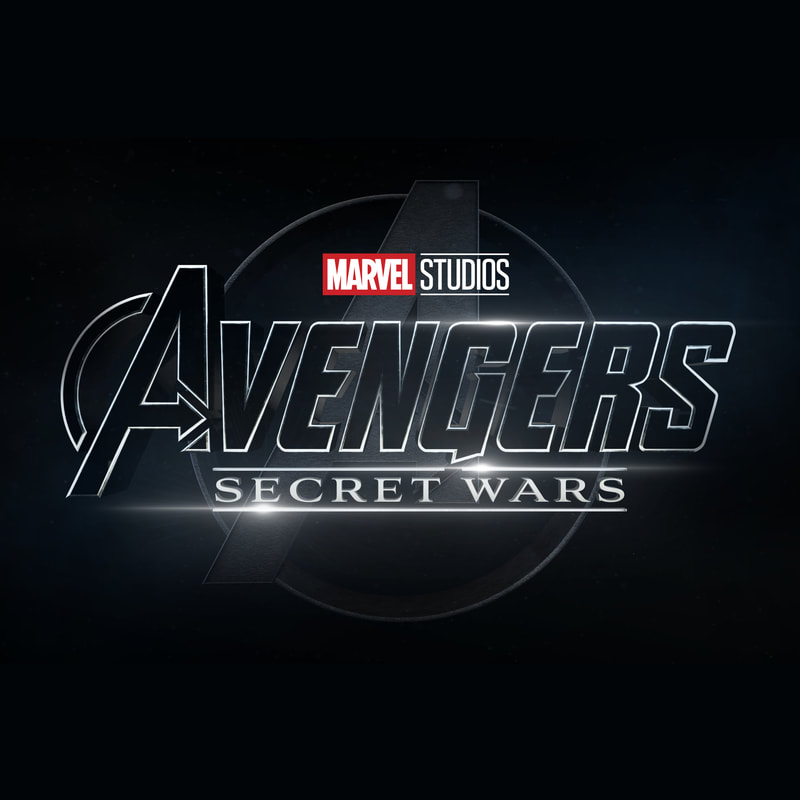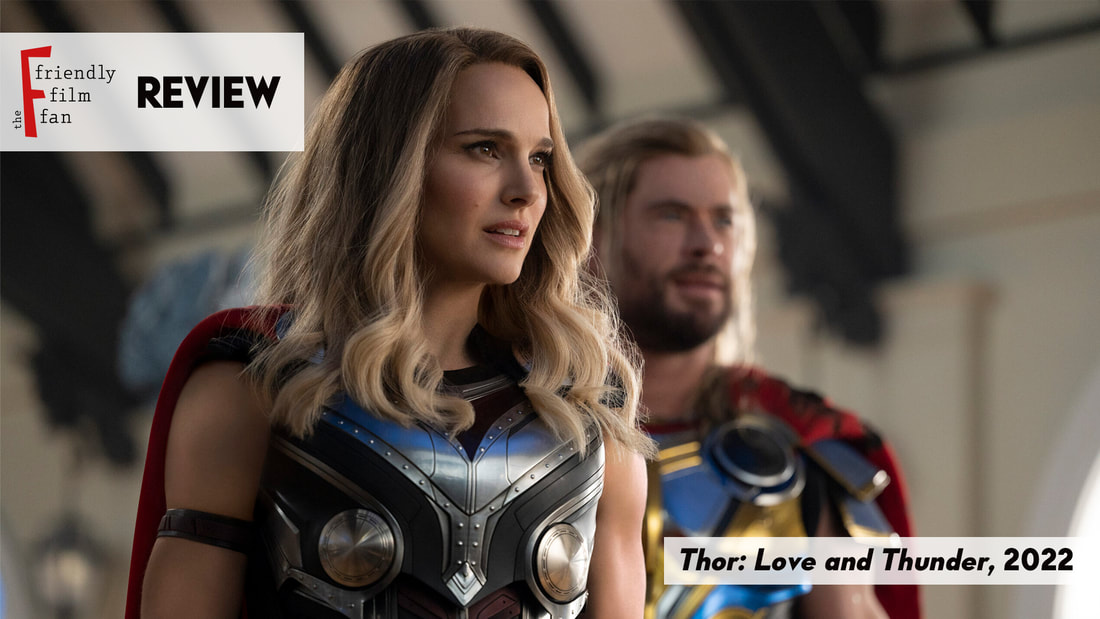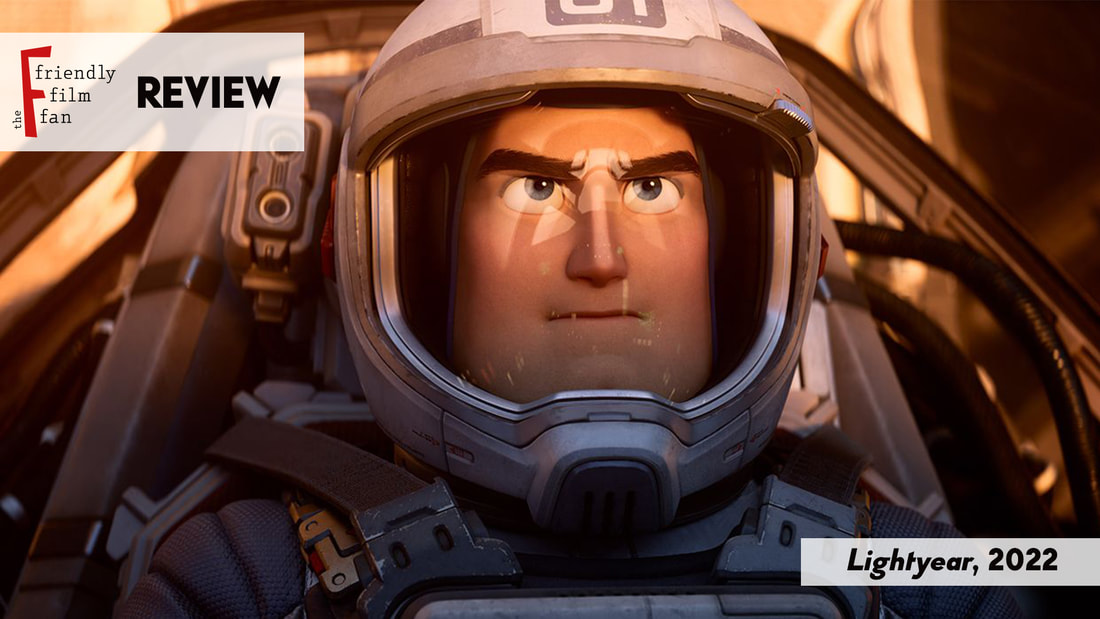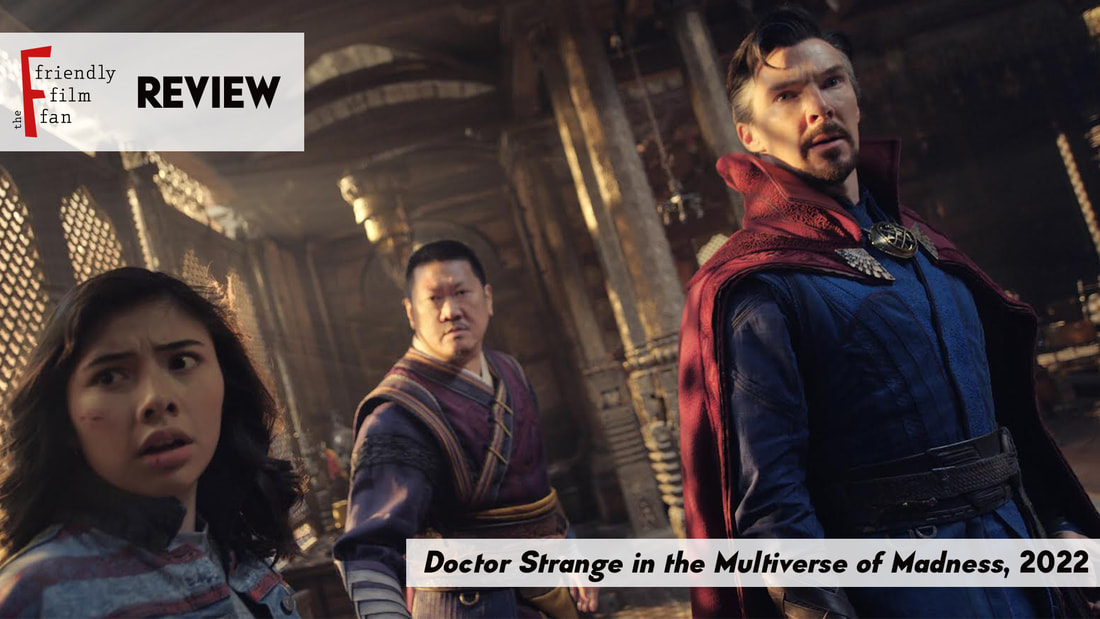“Kingdom of the Planet of the Apes” Review: A Worthy New Chapter in One of Cinema’s Great Franchises5/9/2024 The Friendly Film Fan Breaks Down the New Film from director Wes Ball. Franchise storytelling is difficult, to say the least. How many film franchises can moviegoers name off the top of their heads which have not only continued well past their original iterations into entirely new eras of cinema but have continued to evolve, innovate, and offer new and exciting ways of telling the same story? And how many of those have the same longevity of something like the James Bond films without having to reset or alter their continuities every few entries? It’s a rare feat to begin with – X-Men, the Marvel Cinematic Universe, Star Wars, and even Lord of the Rings to some degree have all failed to net a consistent-enough batting average across all of their films to be considered among the great franchises beyond their legacy contributions to cinema itself – but this accomplishment is rarer still when the sci-fi genre is involved. Alien, Terminator, Predator – in the history of sci-fi filmmaking, not one of these has scraped by without multiple true duds embedded in their being…but that story changes with Planet of the Apes.
With one notable exception (the failed 2001 Tim Burton remake), the Planet of the Apes franchise has perhaps the most consistent batting average in not only sci-fi filmmaking, but all of franchise filmmaking. Even with entries that work less than its best ones, or don’t work very well at all, there is at least offered some sort of innovative spin on the material these movies choose to tackle. The 1968 original – a sci-fi classic – has its twist ending, the third film switches up the environments, and the most recent trilogy takes viewers all the way back to the beginning of when the apes’ intelligence came into being with the original Caesar. It is that most recent trilogy, in fact, which made me a fan of this franchise, becoming not only some of my personal favorite films, but what I consider to be one of the greatest and most undervalued film trilogies ever made, thanks largely to the talents of those VFX teams and the director of the latter two films, Matt Reeves. Kingdom of the Planet of the Apes, which is directed by former Maze Runner trilogy helmer Wes Ball and sports an entirely new cast of characters, sets its story some generations after the events of Caesar’s time. Noa, a young ape living in a small woodland village and this movie’s primary protagonist, seeks to impress his eagle master father by raising and training his own bird from birth. Right away, the audience is endeared to Noa and his friends on a difficult climb which they all make in order to collect eagle eggs for what is known as Bonding Day. Complications arise, however, when another tribe of apes which Noa does not know attacks his village and kidnaps his clan under the belief that they shelter a human. With no choice left to make, Noa sets out to rescue his clan, encountering two companions – an Orangutan called Raka and a human woman – along the way. What sets Kingdom apart from the preceding Apes trilogy, apart from the large-scale time jump, is the scale at which the filmmaking takes place. It may not boast the specificity of image-making that Matt Reeves’ films did, but it offers grandiosity in return, and that grandiosity is a wonder to look at on a big screen. Large vistas of woods, great mountains, enormous rusted tanker ships…even the runtime is the longest in the entirety of the franchise. That can sometimes lead to pacing issues, or an act three that’s a tad overwrought in its execution, but on the whole, this may be the most spectacle-driven Apes film to date, and it more than earns its place amongst the most beautiful-looking of them all, especially in regard to the visual effects, which stay remain the most impressive thing to see even within some already impressive set-pieces. The apes themselves have rarely looked better than this, and under Wes Ball’s steady direction, the performances aid that look admirably. The film also makes a brilliant choice not to ignore the events of the previous trilogy, but to instead mythologize them, echoing notes of what the original series does with its “law giver” character in making Caesar into a quasi-religious symbol whose words different tribes of apes twist to fit their own meaning, something Raka – the Orangutan – addresses upon first meeting Noa. As characters go, Raka (Peter Macon) is the most fun and Mae (which we learn is the human woman’s name, played by Freya Allen) is a more complicated character than one might give her credit for at first, but the real standouts are Owen Teague as Noa and Kevin Durand as Proximus. The latter of the two unfortunately doesn’t really come into play until the third act of the film, but when he does, Durand is the imposing presence the story needs in order to keep things interesting during what ends up being the most ill-paced part of the whole thing. He commands every room he’s in with a performance practically born for this sort of part and knows just how to carry himself so that he overtakes the film’s scenery without outright chewing it up. In contrast, Owen Teague’s Noa is a more emotionally-driven character, and Teague is well up to the task of carrying a film like this on his capable ape shoulders. It’s from Teague’s performance that the emotional notes of the film – when Wes Ball chooses to employ them – get their power, and it’s from his eyes and facial expressions that the viewer understands his character. There are a lot of close-ups and medium close-ups on him in which he’s made to hold the camera’s gaze, and he plays it all beautifully. The film does struggle – as noted – with pacing in a few spots, which seems to come from the idea that the film follows both of the distinct tones present in the preceding trilogy, rather than committing to one or the other; the first half of this film is closer to Rise in narrative flow, whereas the second half sits closer to what Dawn and War (especially the former) were going for in their earlier moments. This is most prominent in the third act, which feels as though the script had two different third acts in mind and simply smashed them together in lieu of throwing one of them out. The way that Mae’s journey plays out during this third act is also written quite broadly but without the necessary clarity of character that comes with having to paint with such large brush strokes. Freya Allen is executing on this admirably, but there’s only so much she can do with what’s not on the page. Still, these are relatively minor complaints compared to what the film offers on the positive end, and I certainly wouldn’t begrudge a filmmaker having to follow up one of cinema’s great trilogies a few lackluster elements here and there. In the end, Kingdom of the Planet of the Apes may not carry the same gravity as its immediate predecessors, but given that very few films ever could, the fact that it’s still this good is a win for movie fans everywhere, and especially for fans of this franchise. It looks great, the performances are all very good, the scale is beautiful, and just being in this world again is sure to be enough to remind viewers why they fell in love with it in the first place. It’s clearly setting up for a further series of adventures with Noa and the rest of these characters, and if they can manage the same miracle as Caesar’s trilogy – a tall ask, but entirely possible – we’re in for something really, truly special. I’m giving “Kingdom of the Planet of the Apes” a 7.8/10 - The Friendly Film Fan
0 Comments
The Friendly Film Fan Reviews the Latest in Superhero Cinema. The MCU has had a rough go of things lately; while critics’ opinions of the franchise have always ebbed and flowed, its overall reception has waned a considerable amount since the start of Phase 4 (Guardians of the Galaxy: Vol. 3 and a few of its streaming endeavors notwithstanding). Now, The Marvels arrives as the third MCU project to be released this year, and the one by which people are measuring the perceived successes or failures of the franchise as a whole, for some reason. There’s been not insignificant amounts of conversation surrounding its somewhat rocky production history, box office hopes, critic scores, and space in the wider sphere of who should get to write about it, how they should write about it, or why. In short, a lot seems to be riding on this one, mostly unfairly.
For context, it's been over four years since we last saw Carol Danvers (Brie Larson) briefly return to help the Avengers defeat Thanos, many years after she had jetted off to space at the end of her own solo film to deal with the Supreme Intelligence and set things right in the Kree/Skrull war. Since “the snap” was undone, Monica Rambeau (Teyonah Parris) has come back to find her mom has passed on in her absence (she’s also gained superpowers – see WandaVision), and we’ve been introduced to Ms. Marvel (Iman Vellani) in her own solo series. The crux of this film’s plot involves the three of these characters coming together to stop Dar-Benn (Zawe Ashton) – a vengeful Kree with a grudge against Captain Marvel – from targeting various planets across the universe which Carol Danvers had once called home. As if that isn’t enough to deal with, the three are also constantly switching places due to their light-based powers becoming entangled. What works about The Marvels may not be much, but it works well enough to keep the movie afloat for most of its noticeably short runtime. For the most part, there’s an appropriately measured sense of levity here, the three leads well-suited to each other’s energies, even if those energies can’t always match the moment they’re in due to poor writing or editing choices. While Brie Larson and Teyonah Parris are doing what they can without the dialogue to support their performance skills, the standout is unquestionably Iman Vellani as Kamala Khan – a.k.a. Ms. Marvel – whose endearing charisma powers this film through its weaker moments. It’s her that manages to keep the viewer glued to the screen whenever she and the other co-leads are together. There’s also at least one genuinely fun action sequence, right after our protagonists first find themselves switching places. The way the camera moves through this sequence practically in sync with the characters’ movements lends an energy to it that the MCU has been lacking in its last few outings (again, GotG: Vol. 3 notwithstanding). And yes, despite some issues I had with the execution, the mid-credits scene is an actually exciting tease of what’s to come, rather than a block of text or a cheeky joke. Unfortunately, what doesn’t work about The Marvels is a much longer list, even if that list doesn’t quite weigh the film down as much as one might imagine. After a short introduction to Dar-Benn at the film’s start (along with some pretty noticeable green screen), we get going with the main plot pretty much right away, but it’s all cut together in a way that makes it feel choppy or cobbled together from different pieces, rather than feeling like one moment is flowing naturally into the next, which flows into the next, and so on. It doesn’t feel so much like a story is being told as pieces of a concept and plot mechanics are being introduced, and the execution of those introductions doesn’t mesh with the jarring tone-shifts going on in almost every other scene. Even some of the more absurd ideas present in the film are fun in concept, but lack appropriate execution. Whether it’s one sequence involving a lot of cats or another where an entire planet’s language is only song, the film can’t weave them into darker surrounding scenes without it feeling jarring or out of place. There are, of course, other things that don’t work: a lot of the dialogue is pretty bad, much of it is used in place of characters showing who they are (or it comes from the wrong character entirely), the score doesn’t strike a proper balance in more dire scenes, most interpersonal conflict between characters is immediately resolved in the name of moving the plot forward rather than being explored more richly, Dar-Benn is one the MCU’s worst-rendered villains to date, and while some choices regarding the ending make sense, they don’t square with the logic of previous franchise entries or even this film’s own story. Perhaps the biggest offender, though, in this long list of things that don’t work is this pressing question: what is this movie about? The film itself doesn’t seem to have an answer. It briefly addresses the idea of interventionism and how interfering in conflicts that are not one’s own can bring about terrible consequences for those involved, but it almost immediately drops this idea to, once again, keep the plot moving forward. It also flirts with the idea that Carol would continuously try to fix things on her own despite having two people there with her because she feels responsible for the mess in front of her, but it never actually executes on that concept either. Every time the film gets close to having a theme, a message to tie it all together, it abandons the opportunity in favor of keeping the plot moving as quickly as it can, leaving the film feeling fine on the surface, but ultimately hollow. In the end, box office success or lack thereof, The Marvels would likely have a tough time sticking in the minds of moviegoers if it weren’t for the brand recognition and the iconography of its titular characters in other mediums. It’s not as if the film doesn’t work, but what does work seems as though it’s part of a separate story, tonally speaking, and while the chemistry and performances of the three leads are enough to get viewers through most of the runtime, they won’t get through it all without feeling at least a few speed bumps. I’m giving “The Marvels” a 5.8/10 - The Friendly Film Fan The Friendly Film Fan Breaks Down the Epic Marvel Studios SDCC Panel. This past weekend at San Diego Comic Con – the largest and most popular comic con in the world by far – much was revealed. DC unveiled new looks at their two upcoming end-of-year releases, Black Adam and Shazam! Fury of the Gods (while noticeably avoiding any updated on The Flash, Joker 2, or The Batman 2), Prime Video released a new trailer for their Lord of the Rings prequel series entitled The Rings of Power, and we got a couple of teases for some 2023 releases, including a first trailer for Dungeons and Dragons: Honor Among Thieves and a small teaser for the highly-anticipated Keanu Reeves action vehicle John Wick: Chapter 4. But no studio nor streamer has ever been as busy at SDCC as Marvel Studios. After the official launch of the Marvel Cinematic Universe in 2008 with the releases of Iron Man and The Incredible Hulk, the MCU has dominated Hall H panels and D23 showcases almost every time they’ve happened. Shepherded by longtime Marvel producer Kevin Feige, their biggest and perhaps most memorable slate of reveals was back in 2015, just before the release of Avengers: Age of Ultron. That film’s trailer was played (it had been leaked and then released online a week or so before), and Marvel Studios unveiled their plans for Phase 3, which included the revelation of Civil War as the third Captain America film, the introduction of Black Panther and its principle star, and an eventual culmination in the dual releases of Avengers: Infinity War Part I and Infinity War Part II – the latter would go on to become Avengers: Endgame. (The Spider-Man films were not on the slate at the time of that announcement because the Sony deal had not yet been finalized.) Since that reveal, the MCU has gone through a number of shakeups, including a change of tone for characters like Thor, the passing of one of its most beloved stars in Chadwick Boseman, and of course, a global pandemic which would fundamentally re-alter the release strategy for Phase 4, the original plans for which looked very different from what they eventually became. To that end, before we dive into where the MCU is going, it may be helpful to take a look back at where it has been post-Infinity Saga, which ended with the Phase 3 closer, Spider-Man: Far From Home. I won’t dive into each release individually, but will list them here for those who need a little refresher. All series are marked, and anything not marked as series is a feature film. (Note that the What If…? animated series is not officially part of the MCU, but is produced by Marvel Studios as part of their release slate.) PHRASE 4 SO FAR (RELEASE ORDER)
The only real mystery left with this previous release slate is that of Moon Knight, which was initially marketed as a limited series, but seems to have been left open for at least the possibility of a season 2 if Marvel Studios wanted to go for it, given its post-credits scene in the final episode, and several Phase 6 release date not yet having been revealed. Presumably, one of those could be a placeholder for a Moon Knight season 2, but as only three Phase 6 projects were revealed at SDCC, that confirmation or lack thereof won’t be coming for a while. With Thor: Love and Thunder in theaters right now, Phase 4 of the MCU is nearly wrapped up, with only four more projects on the way, two of which act as their own stand-alone adventures. PHASE 4 ONWARD (RELEASE ORDER) Though no official release date has been set for the Guardians of the Galaxy Holiday Special, it is still slated for a December release this year. The I Am Groot show, which also seems largely disconnected from the wider MCU (and wasn’t on the Phase 4 recap slate, much like the What If…? show) has been dated for an August 10 release. As far as integrated MCU projects, however, there were some significant updates. Marvel’s She-Hulk: Attorney at Law series on Disney+ released a new trailer with a more detailed look at the world of superhero law, more of Mark Ruffalo’s Hulk spending time with the titular character, and a tease at Daredevil (played by Charlie Cox) making a guest appearance after his MCU debut in Spider-Man: No Way Home. In a less formal reveal, the whole of Phases 4-6 was also officially dubbed to be what Marvel Studios calls The Multiverse Saga. The biggest update, however, was one for which every MCU fan was supremely nervous: the first trailer for Black Panther: Wakanda Forever. Following the tragic passing of Chadwick Boseman as the titular character, also known as King T’Challa, it has been an unsolvable mystery how the MCU was going to reckon with the course of real-world events in a film series where the character of T’Challa had not passed away, in fact having made a triumphant return to the land of the living in Avengers: Endgame. After the news was released during the Phase 4 reveal that Marvel Studios would not be recasting the part, many speculated as to who would take up the mantle (Shuri, Nakia, and Okoye are the leading theories), and whether Ryan Coogler and Marvel would be able to pull off a second Black Panther film that simultaneously needed to push the MCU forward in telling a Namor/Atlantis-infused story and write out its leading character with enough tact and grace that it wouldn’t feel awkward or forced for the characters within that world (a challenge which even Star Wars couldn’t quite conquer). Luckily, the new teaser does make it seem as if they actually pulled it off, with a somber but inspiring tone of bittersweet triumph, emotional farewells, and national strength for the kingdom of Wakanda. The film itself is slated for release on November 11 of this year and will act as the final project in Phase 4 of the Marvel Cinematic Universe. Both the She-Hulk: Attorney at Law and Black Panther: Wakanda Forever trailers, as well as the rest of the Phase 4 release slate, can be seen below.
PHASE 5 But while the Black Panther trailer was perhaps the biggest unveiling at SDCC this weekend as far as non-announcements go, it was not the only major revelation that Feige and Marvel Studios had to offer. There was also a closer look at Phases 5 & 6 of the Marvel Cinematic Universe, with some projects receiving official release dates and names, and others receiving major updates as far as release timing and progress. We’ll get to Phase 6 in a bit, but for now, let’s go over what’s been revealed about Phase 5. Those revelations included estimated dates for MCU series Echo, Loki: Season 2 (which is currently filming), Agatha: Coven of Chaos, Ironheart, and an 18-episode series order for Daredevil: Born Again, which will star Charlie Cox as the titular character and Vincent D’Onofrio as Wilson Fisk, a.k.a. Kingpin (Fisk was last seen in Marvel’s Hawkeye series). It is not known which of these shows – save for Loki – will be limited series or recurring projects. Also revealed were official release dates for films such as Ant-Man and the Wasp: Quantumania, Guardians of the Galaxy: Vol. 3, The Marvels (which acts as the sequel to Captain Marvel and the Ms. Marvel series simultaneously), and Blade, plus the official reveals of Captain America 4 (which is called New World Order and will star Anthony Mackie as Captain America following The Falcon and the Winter Soldier series) and a Thunderbolts movie. All release dates, estimated and exact, are listed below. (*There has also been a What If…? season 2 announcement set for early 2023, but no season-of-year estimation or release date has yet been made public.) PHASE 6 PREVIEW Phase 6 is shrouded in shadow and secrecy, but not all things have been left mysterious. While many of the late 2024 and most 2025 release dates have been kept ambiguous as far as what projects will place where, it’s likely that many of the as-yet-undated projects will fill those spots. Projects such as the in-development and confirmed-to-be-R-rated Deadpool 3 from Shawn Levy will likely factor in here, as will (most likely) Marvel’s Armor Wars and supposedly R-rated Zombies series for Disney+. And of course, don’t be surprised to see some X-Men projects announced for this phase later on once Phase 5 is well underway, especially given some of the stories that are due to come later. On the end of certainty, however, Marvel’s previously announced Fantastic Four movie has been selected for release on November 8, 2024. There are no details yet insofar as casting or a replacement for Jon Watts, who was picked to helm the project but left the job earlier this year, citing the need to take a break from superhero filmmaking after rounding out his own Spider-Man trilogy with No Way Home in late 2021. There was, however, another pair of announcements to make up for that lack of news which MCU fans the world over have been eagerly anticipating. If you’re like me or a number of other MCU fans, Phase 4 has likely felt a little bit aimless to you; that’s not to say it doesn’t have a larger point or won’t fit in with the longform story it’s leading into, only that an end goal has been elusive across most of its run; there isn’t really a culmination project like The Avengers to wrap it all up and lead to the next phase, even as Black Panther: Wakanda Forever seeks to close the chapter. Phase 5 will culminate with the Thunderbolts movie, which seems like a logical endpoint for both phases, but fans have nonetheless wondered: will an Avengers movie ever happen again, and if so, when? Well, now we have an answer, and it’s a doozy. It seems that in 2025, we’re scheduled to get not one, but two Avengers films, separated by a matter of months and only two other as-yet-unannounced MCU projects. The two films are entitled Avengers: The Kang Dynasty (slated for release on May 2, 2025) and the big reveal, Avengers: Secret Wars, which is dated for November 7, 2025. The former of these two titles will likely deal with the Marvel villain Kang the Conqueror - played by Jonathan Majors – who will appear in Ant-Man 3 and an approximation of which was already revealed in the season one finale of Loki on Disney+. The latter, titled after the beloved Secret Wars Marvel comics run, will supposedly feature the collapse of the multiverse as the MCU universe (616) collides with another, eventually causing the demise of both. These events have been teased in other MCU projects but were seemingly actually triggered in Doctor Strange in the Multiverse of Madness by an incursion caused by its title character (the mid-credits scene of that film addresses this). In theory, Secret Wars could provide Marvel Studios with the opportunity to reboot the whole of the MCU completely, allowing them to start from scratch in a way that feels like both like a finale for the current MCU and an organic start to a new version of it; in effect, it would be a true finale to the whole enterprise. Either way, only one thing is certain: Marcel the Shell had better make an appearance, toenail skis and all.
UNDATED MCU PROJECTS (ANNOUNCED)
Which of these newly-announced/newly-dated MCU projects are you most looking forward to? What did you think of the trailers for She-Hulk and Black Panther: Wakanda Forever? Let us know in the comments section below, and thanks for reading! - The Friendly Film Fan The Friendly Film Fan Discusses the Latest from the Marvel Cinematic Universe. After Marvel Studios rolled out Thor: Ragnarok in November of 2017, courtesy of director Taika Waititi (Hunt for the Wilderpeople, What We Do in the Shadows), the entire landscape surrounding the character changed, seemingly overnight. Gone was the self-serious, dour god with his grandiose Shakespearean aura and booming voice, and gone was the dramatic emphasis on world-ending stakes (at least in Thor’s own movies). Also gone was Jane Foster, Thor’s love interest in the first two of his solo films, and the driving force behind the plot of the second. With a striking tonal shift and Natalie Portman refusing to come back for the third film due to its fallout with original Dark World helmer Patty Jenkins, Ragnarok felt like a reset, a fresh-faced new start for both the character of Thor and for the way in which the MCU would handle most solo films going forward, at least if they weren’t already in production. Even with the success of the Guardians of the Galaxy films – which thrived on their absurdity and James Gunn’s comic sensibilities – no one knew if people would buy into a character whose entire mode of being was revamped just before he showed up for the grand finale of the whole Infinity Saga with everyone else. For any other character in the MCU, the switch would have come way too late. And yet, the gamble paid off. Not only was Ragnarok a bigger hit than the first two Thor films, it was a major hit on the critical scale, its highest praises being Chris Hemsworth’s comic timing and Taika Waititi’s heartfelt storytelling. It came the closest of any solo film apart from Captain America: Civil War to grossing $1 billion at the domestic box office (Black Panther would shatter that record only three months later). Naturally, Marvel Studios wanted Waititi back for another go-round, but unfortunately, Love and Thunder isn’t nearly as successful in its storytelling (and is likely to be less successful in its box office) as its predecessor was.
To be sure, there is a lot to like about Love and Thunder, from its design work to most of the performances. Chris Hemsworth is so much Thor now that seeing him outside of the MCU feels alien, as if those are his alternate personas whereas Thor is his real one, and it works here just as well as it always has, with great comic timing per usual. Christian Bale - easily the best part of the movie – is gripping as Gorr the God Butcherer, wringing a genuinely terrifying, nuanced performance out of a character whose screen time essentially amounts to threats of action but little else. And of course, as heavily advertised, there is the return of one Doctor Jane Foster (Natalie Portman) to the franchise. Portman is definitely having a lot of fun here, and you can feel it coming through the screen (though her character’s story leaves a bit to be desired, which will be discussed in the spoiler review I may or may not forget to write). Who wouldn’t love wielding Mjolnir with biceps like those and summoning lightning from the heavens? Essentially, almost everything that worked last time – good performances, cool villain, fun side characters, uniquely styled production, solid classic rock-heavy soundtrack – works again. Even some of the jokes land in unexpected ways. But that’s not enough to carry a movie that doesn’t seem to know what it wants to be or what story it wants to tell. As a matter of fact, it seems like it doesn’t know whose story it wants to tell. As Korg narrates (which happens multiple times), we’re taken through the storylines of a few different characters, and while I won’t spoil much more than that here, a lot of time is spent with each before we have to go back to do the whole thing again with whoever’s next in line. This causes the film to feel messy, unfocused, and improperly paced. If anything, Love and Thunder isn’t quite long enough to give the necessary space to everything it wants to do. The adventure this time around has almost nothing to do with helping the characters resolve any inner conflicts – as all the best stories do – and that adventure occupies most of the runtime without ever truly coming together with what the characters are going through except by proxy or when it’s unavoidable. This is where the issue arises wherein the film doesn’t seem to know what story it’s telling, or whose. Plot-wise, this one is already pretty thin, so any time devoted to non-plot-essential stuff has to focus on emphasizing whatever themes the movie has through its characters’ actions. The first Thor was about humility being the key ingredient in leadership, knowing that one cannot lead without first humbling themselves. Ragnarok was about a civilizations demise in the wake of their own genocidal past not only being justified but righteous and that any true nation is made up of the people within it rather than the ground they stand on (it really is a subtly deep movie). In fact, The Dark World is the least liked Thor film largely due to the fact that it’s not actually about much other than setting up what’s to come (that and its first half is genuinely boring). Love and Thunder – though it’s not setting up anything in particular – has the same problem. There doesn’t seem to be a unifying theme or message here. What is this movie about? The question isn’t “what happens in the plot?” or “what beats does the movie hit before moving on to the next?” or even “what do the characters have to do to advance the story,” but what is this movie about? Having seen it a few days ago, I still don’t really have an answer. The film doesn’t really have an identity of its own, only one similar to its predecessor and nostalgic for its franchise beginnings. And as far as whose story this is, that sort of thing would typically arise from whose internal conflict the movie is attempting to resolve. Some would say Thor’s, but there’s not a lot of emphasis on his “figuring out who he really is,” as the marketing told us, since the conflict with Gorr takes up most of that space and doesn’t really explore that aspect of Thor’s character at all. Others may say Jane’s or even Gorr’s, but Jane doesn’t really have an internal struggle to speak of, and while Gorr does have both internal and external conflicts, they don’t really match up with each other very well. As far as character, Love and Thunder also skews fairly close to the bones of what it needs for any interactions between them, and apart from Thor and perhaps Valkyrie, hardly any of them are given anything interesting to do. To justify bringing Jane Foster back into the fold so she can become “The Mighty Thor,” the film doesn’t really give more than a half-assed answer, and the rest of the time, she doesn’t really drive the plot forward at all. It’s as if she’s “along for the ride” but never actually gets to drive. Gorr, too, is also given almost nothing to do for most of the film, which testifies to Christian Bale being one hell of an actor, since his performance remains the best part of the movie. Even Korg and Valkyrie don’t really do a whole lot. As I’ve noted before, though, these are larger issues kept beneath a shiny surface, and that surface does look pretty nice on the whole. All in all, the MCU’s latest entrant is a fun summer romp, tailor-made for a casual Sunday afternoon viewing, but doesn’t have much else going for it beneath the surface. Unfocused, oddly paced, and thinly plotted, its best moments can’t suffice for the fact that it doesn’t really seem to have much substance beneath its candy-coated exterior, or anything it wants to say. Even Doctor Strange 2 at least had Sam Raimi’s whacky filmmaking to keep it interesting, but this one doesn’t really make a lot of interesting choices in that vein, at least not choices that haven’t been proven to work before. It mostly succeeds on its own terms, and it’s hardly the most aimless thing or one of the worst efforts that Marvel Studios has produced thus far, but Thor: Love and Thunder will likely rank pretty low when paired with the whole of what the MCU has to offer. I’m giving “Thor: Love and Thunder” a 6.5/10 - The Friendly Film Fan The Friendly Film Fan Breaks Down the Latest from Disney and Pixar. There was a moment, back in the 2000s and towards the middle of the 2010s, that it seemed no animation studio could ever top the sheer ingenuity of Pixar. Films like Finding Nemo, The Incredibles, Ratatouille, Wall-E, Inside Out, and Coco have become not simply some of the best offerings of the studio’s catalogue, but in the history of animated filmmaking (and let’s not forget the brilliantly tragic prologue to Up). Even more recent efforts like Soul have come close to joining those ranks. And then, of course, there’s the franchise by which Pixar came into being – the Toy Story quadrilogy. Not simply some of the greatest animated films ever made, but some of the most essential in forwarding the medium towards its greatest heights, both in storytelling and in aesthetic glory. One needs only to see the vast leap from the o.g. Pixar debut – the first-ever fully CGI animated film – to its (potentially) final offering in Toy Story 4 to observe just how far forward animation has come since 1995. Its animation is near photoreal, its storytelling much deeper and more philosophical than anything one might expect from a movie largely led by a cowboy doll and a talking spork. So why is it that Lightyear, a Pixar-made sci-fi adventure featuring one of the Toy Story series protagonists on an intergalactic mission through uncharted space and time, feels so…plain?
Billed as the movie Andy is watching in the early minutes of the original Toy Story, and the one upon which the Buzz Lightyear toy he receives in that film is based, Lightyear moves along a decent clip with the occasional fun action sequence, some fun side characters, and lots of quippy dialogue for about an hour and a half as its protagonist pushes the limits of space travel, encounters alien robots, and learns that he can’t finish his ultimate mission alone. If the film accomplishes any goal almost perfectly, it’s that it does seem like it would have been a child’s favorite movie in the mid-90s. However, by Pixar standards, the movie finds itself somewhere between “average” and “decent.” That’s not to say it’s bad – though it certainly could be better – but whether audiences have been conditioned to settle for “solid” filmmaking from what used to be the leading studio in animated innovation because of their past output is a question worth asking. There’s no moment in Lightyear where the audience or the characters in it are truly challenged, or even asked to sit with an emotional beat for more than about thirty seconds, tops. In its lowest moments, the film almost immediately skips to whatever the next joke or plot revelation is meant to be, often seeming as if it’s afraid the audience will get bored if it doesn’t keep moving at any cost, including the cost of poignancy or genuine distress. It never slows down or sits with anything whenever things go wrong, apart from maybe twice in the entire runtime. Multiple plot points of the movie almost feels as if they were supposed to be longer, but had to be rushed through in order to keep the film under two hours. It feels as if the runtime mandated the story being told, rather than the other way around. That method of storytelling also extends to the film’s ultimate message, which essentially boils down to “don’t be afraid to ask for help/don’t be stubborn and do your mission alone,” but the movie never really hammers that home until after the climax of the film has come and gone – a climax which raises way more questions than a movie like this has the ability to answer – the actual execution of which seems to be pointing towards an entirely different message about clinging to the past that the film has spent almost no time building toward. Although this other message does give the film’s protagonist a place to go arc-wise, it’s so brief that it never really registers until after the credits have rolled, and even then, it seems as though Disney itself refuses to learn that lesson. There’s something to be learned, but no real challenges to be overcome in learning it that can’t be resolved with a blaster. As Buzz (voiced by Chris Evans in this iteration) moves through his own story, the film never actually challenges him in a meaningful way apart from physical difficulties; at one point, he forgets to inform his ragtag team that [redacted], and it ends up that he has to fix his mistake via another small action sequence. This largely extends to the other characters as well – all true challenges are physical, all emotional battles are clipped by more jokes (most of which don’t land). If anything, the one thing Pixar hasn’t lost is its ability to churn out fun animal side characters like Sox, a robot cat given to Buzz to ease his emotional state after his off-planet escapades rocket him through an extensive time jump. No doubt this will boost toy sales significantly, so the corporate benefits of the character are abundantly clear from the get-go, but nevertheless, when Sox is on screen, he’s always the most watchable part of the movie. Visually, the film looks very good, but there’s not much that it’s doing differently than most other animated films. Compared to recent efforts like DreamWorks’ surprisingly charming adaptation of The Bad Guys, the animation itself feels fairly plain – at least by Pixar standards, and especially after Soul’s breathtaking lighting. That said, what’s there works well enough for most audiences, and you most likely won’t hear many complaints like mine about whether it looks interesting or just pretty good. There’s not as much space action past the first act as one might desire from a film about a space ranger, but what’s there is at least engaging to look at, if only because there’s just so much visual noise squeezed into nearly every frame. In the end, Lightyear gets the job done, but doesn’t put up a lot of effort in getting there. As a sci-fi adventure, it’s solid enough, and kids are unlikely to get bored by it, but for anyone wanting something deeper from Pixar, it’s unlikely they’ll find anything above your run-of-the-mill, average studio animation. There’s little innovation here, but it works on the terms it sets for itself, and it does have a few moments that both kids and adults can latch onto, as well a pretty good lesson for kids to learn (however muddled the teaching of that lesson may be). I suppose the most important question one must ask themselves in the face of something like that coming from Pixar is this: is that enough? I’m giving “Lightyear” a 6.5/10. - The Friendly Film Fan This review briefly touches on some of the plot setup for this film. You have been warned. The MCU has always been a little bit self-serious. Even in the films where comedy was the primary mode of storytelling (i.e. the Guardians and Spider-Man films), one has a distinct sense that though the material is self-aware, it’s not especially zany or eager to become playful with its subject matter, particularly on the crafts side. There are no star wipes, no cuts-to-black in the middle of proceedings, and zero freeze-frame lining the walls of the most popular and easily the most successful franchise – both critically and commercially – ever committed to digital rendering. There aren’t even any transitions where one frame bleeds into another as if characters are invading the narrative to take over its main thrust. Most of it, to be frank, is fairly straightforward comic-book storytelling, as straightforward as those things can be when dealing with a purple genocidal alien and a pair of best friends who take the forms of a tree and a raccoon. Generally speaking - and apart from the Guardians films – there’s not normally a ton of risk involved in directing a Marvel Studios film, at least not in terms of an audience being jarred by one’s sense of style; that can get boring after a fashion. In all truth, the MCU needed to get a little silly to stay fresh. It needed to evolve from a mere action/comedy franchise into something more akin to a fun exploration of what kinds of MCU stories can be told. And that, by far, is the biggest strength director Sam Raimi offers in directing the newest entry to the Disney juggernaut, Doctor Strange in the Multiverse of Madness.
As the titular sorcerer travels the multiverse with the help of newly-introduced multiverse-hopper America Chavez (Xochitl Gomez) in order to stop a fearsome evil from pursuing them and ultimately taking America’s power for its own, one can sense the Sam Raimi style bleeding into the frames from the edge until they consume the story entirely. There are multiple action sequences with genuinely silly effects – one in particular involving a classical music composition – and any number of transitions those unfamiliar with Raimi will no doubt notice as being distinct amongst the wider MCU. Raimi’s been no stranger to camp, ever since his original Evil Dead release in 1981, and it peppers Multiverse of Madness in some fairly significant ways. Another storytelling element to which Raimi is no stranger is horror; Multiverse of Madness is not a full-on horror film, but it does get significantly closer to that genre than any MCU movie has to date, though just how close Raimi was allowed to get is in question since Scott Derickson, the film’s original helmer, presumably left the project because Marvel didn’t want him to get too close to making an actual horror film. That said, certain images and moments are crafted with a horror element in mind, as is evident in certain sequences and with particular characters, especially the villains this time around. Where the film runs into significant problems is its script, one that can’t seem to decide whose story it’s telling or how it wants to go about telling it. Whereas the initial Doctor Strange film had the benefit of being an origin story, thus only needing to set up one character, Multiverse of Madness carries the unwieldy task of not only introducing us to America Chavez, but to the multiverse at large, and all that it contains, both in its more brief appearances and its more significant layovers. That means a lot of characters and a lot of worlds to cover in a fairly short span of time, and it’s not always up to the task. Unfortunately, though the film certainly has at least a small arc for its titular hero, and he is very much in the center of the frame, the introduction of the wider MCU means that stories in which he’s involved can’t only focus on him now – even if he is, as noted, the title character. Because of all the setup involved, as well as needing to handle at least two other mainline characters’ stories, Strange feels a little bit pushed to the background in terms of development here. We know about him by film’s end almost as much as we knew at the beginning, and apart from some rudimentary introductory material, we don’t really know that much about what kind of person America Chavez is either. That said, MCU movies have bounced back from character development issues and over-bloat before – hell, even Iron Man 2 – the worst MCU movie – still coasts on the charms of Downey Jr. and Scarlett Johannson. What Multiverse of Madness may not bounce back from is in how it handles the Wanda Maximoff character, whose MCU journey has been one of the most compelling of any of her cohorts across four movies and her own Disney+ limited series (though the number of movies drops to three if one considers she only briefly appears in Avengers: Endgame). It’s not to say that the place Wanda ultimately ends up in the film makes no sense, but on the whole, it’s merely a repeat of her emotionally-driven arc from WandaVision without the necessary developments taking place to get her back to where she needs to be at the beginning of it (I’m deeply sorry if that sentence is confusing, but keeping this spoiler-free means that will occasionally happen). There is one small line during the first act that hints at what might be driving Wanda towards this point of origin, but no justification for it or demonstration of its truth beyond what we already know from that series. Elizabeth Olsen, as always, acts the hell out of whatever she’s given to do, but her function in this film is more so as a plot device than as her own distinct character, ditto America Chavez for most of the film’s runtime. Wanda begins at an endpoint here without the MCU having earned that journey for her character, and while her story in this film may make sense in a vacuum, the question of how everything connects to the wider MCU forces it to confront a near-antithesis of itself without so much as a guide to who she is or who she has been. All in all, Doctor Strange in the Multiverse of Madness does bring some of that much-needed fun back to the film side of the MCU, where nearly everything has been soaked in dour, post-Endgame dread or multiverse acknowledgement/setup, and is able to bring some of that Sam Raimi zaniness to this world with a decent amount of success, but the script for the film can’t seem to handle the weight of what it needs to accomplish in the amount of time it has to accomplish it. Everything that doesn’t work takes up a lot of the spotlight from the things that do, and despite the myriad showcases of style, some fun cameos, and a healthy dose of zany horror, this MCU entrant may end up disappointing audiences on a number of levels. Perhaps this film needed to be longer in order to accommodate everything it needed to include and flesh out some of its more significant pacing issues, but – while I won’t say I wasn’t at least a little bit let down by some of its less favorable material – for my part, it is refreshing to see the MCU dive head-first into becoming something almost entirely different than what it’s been to this point. I’m giving “Doctor Strange in the Multiverse of Madness” a 7.6/10. - The Friendly Film Fan The Friendly Film Fan reviews the studio's third-straight Disney+ release. 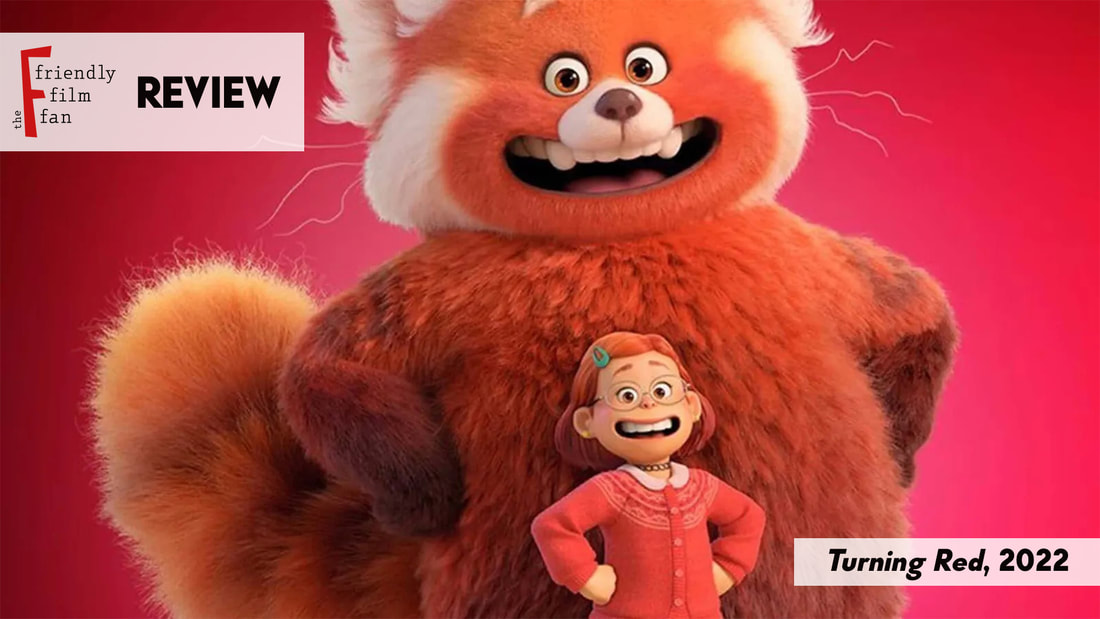 Back in December of 2020, as Disney and Pixar’s latest animated feature Soul debuted on the streaming service Disney+ (with no theatrical release), the world was introduced to a new normal of which we were blissfully unaware. One more Pixar streaming release and nearly a year and a half later, the latest effort from the animation studio, Turning Red, has debuted on the service – as Soul and Luca before it – sans a theatrical showing. Whether this is fair of Disney to do or whether it’s fair that CEO Bob Chapeck only seems interested in pushing funding towards projects exclusively owned and operated by the parent company while others like 20th Century, Searchlight, or even Pixar get the short stick is a discussion for another time, but it must be said up front that Turning Red deserved a theatrical release. Now, onto the actual review. There are moments when Turning Red feels as though it might transform into something brilliantly subversive, and many times, it’s a hair away from doing so. The main character often bucks from tradition, sneaks out of the home, refuses to heed her mother’s wishes, and generally rebels almost the entire runtime, and the movie not only posits this as a good thing, but something essential to a child’s development as they grow in their independence, especially if their trajectory is distinctly non-traditional. In theory, Turning Red should be one of the most underrated Pixar movies to ever grace a streaming platform. Unfortunately, the execution of those ideas is a little undercut by the fact that this is…well, a kid’s movie. Animation style and any gripes or defenses of it aside, Domee Shi’s first entrant in the Pixar canon has all the ambition it needs to truly cut through some of Disney’s toughest material: parental disapproval and broken parent-child relationships. To its credit, the film doesn’t completely fix the relationship between Rosalie Chiang’s Meilin Lee (a.k.a. Mei Mei) and Sandra Oh’s Ming (Mei’s mother) by its end, but it also doesn’t really make a definitive statement on Mei’s eventual place in the story. We know how we’re supposed to read into whatever’s going on, but it just seems as though the film could have taken 30 minutes getting there instead of nearly two hours, and much of that is due to the story’s lack of focus. When Mei is at school with her friends or interacting with her mother, the movie’s cooking well, and one can tell there’s a lot more meat on the bones than previously thought, but then the moment would come when that meat is meant to be revealed, and it’s just…kind of there. The film’s attempts at comedy work for what the movie needs, but still largely fall flat, and while many of the metaphors and what the story is meant to be saying work in thought, they feel sloppy in practice. Perhaps the sloppiness is partially intent, partially happenstance, but nevertheless, messiness in story is one thing and messiness in storytelling is another entirely. Most of this can be attributed to the fact that Mei’s friend characters aren’t that interesting or three-dimensional (Mei herself feels largely two-dimensional most of the time), but it becomes most obvious when the rest of the family is brought into the fold. Mei’s father is not a character; he’s a mouthpiece for the movie to bounce jokes and character development off of, but we neve actually get to see him develop at all. He’s always around, but never engaged, always in the home scenes, but almost never necessary. His one big moment with Meilin pokes at a sensitivity most animated dads take entire movies to grow into, but the movie doesn’t seem interested in him as anything but a chess piece, a way to move everything else to where it can go while he just stays put where he is on the board. In fact, pretty much any male character in the movie is a one-dimensional piece of cardboard for the movie to use in pretty much every way except advancing the plot or bringing nuance to the story. That’s not to say that the men should dominate the story more – this is very much a story geared towards and for young girls – but it sort of felt as if they were just dropped into a story in which they didn’t really have a place. Where I will give Turning Red its largest line of credit is in how it tackles female pre-pubescence specifically as something that’s awkward, gross, uncomfortable – as all pre-pubescence is – but also entirely and unequivocally normal. The film references periods in no uncertain terms, and I can’t remember the last time an animated movie had the sense to talk about menstruation with anything except cringey embarrassment at even touching the subject. It may seem like a quietly revolutionary thing for an animated film to do so explicitly, but it’s greatest contribution is how non-revolutionary it feels. One notices the jokes around it and the natural embarrassment a child feels going through it for the first time, but the film doesn’t use these as a way to shun or put down the event of having a period; in fact, Mei’s mother goes out of her way to help her daughter get through her “red bloom” (though obviously the movie is dealing with something else entirely in that moment). There are many other thing the movie does well – the animation looks great, the editing is sometimes ridiculously whimsical, it’s not a slog to sit through, there are fun gags and side characters, and there’s stadium scene that’s really neatly executed – but they’re all things Pixar has always done well, so this stood out as something uniquely praiseworthy. Simply put, Turning Red may present itself as something truly of a kind with its peers, and to some it will be – which is a good thing – but by and large, it feels like Pixar on cruise control, just cycling through the motions until the next Pete Doctor project can show everyone how it’s really done. Maybe Pixar needed to be on cruise control for audiences to see just how much pressure is put on them for quality filmmaking at a level most people don’t expect from live-action projects out of more scrutinized studios. I will still fight for films like this and for their theatrical releases, regardless of whether I believe them to be as good as they have the potential to be or not; but cruise control still won’t win any races, and Pixar is starting to fall behind. I’m giving “Turning Red” a 7.1/10. |
AuthorFilm critic in my free time. Film enthusiast in my down time. Categories
All
|

